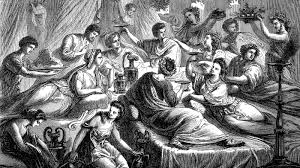Welcome Calorie Zero
Mămăligă
Originating from Romania as a peasant's or L'viv based poles' dish during their resettling in the recovered territories after WWII, also known as Polenta (italian), Puliszka (hungarian), Kulesha (ukrainian). Note that the way of preparing and recipe may differ between the countries's cuisine where they evolved as the working's man rudimentary dish: Romania, Italy, Switzerland, Slovenia, Croatia, Chechnya, Ossetia, Georgia, Eastern Galicia.

Pulmentum
Historically, porridge is the oldest form of consumption of grains, long before the appearance of bread. Originally, the seeds used to prepare slurries were very diverse as millet or einkorn.
Before the introduction of maize in Europe in the 16th century, mămăligă had been made with millet flour, known to the Romans as pulmentum (a small portion of food eaten as a starter to a meal). Moreover, the Romans ate so much of it that the Greeks called them pultiphagonides (porridge eaters).

Cook Time
Instruction
Cooked mostly by peasants in the past, often acting as a substitute for bread. They would prepare it in a round-bottomed kettle known as ceaun, stir it continuously to composure and then turned upside down on a plate or wooden source. After it cools down, a piece of string or sharp objects would be used to cut it.

Ingredients
- 1 litre water, boiling
- 200 grams cornmeal
- 1 teaspoon salt
Chapter One of B. Stoker's Dracula
I had for breakfast more paprika, and a sort of porridge of maize flour which they said was ‘mamaliga’, and egg-plant stuffed with forcemeat, a very excellent dish, which they call ‘impletata’
| Nutrition Facts | |
|---|---|
| Serving size: 100g | |
| Calories | 70 |
| Calories from Fat | 0 |
| % Daily Value * | |
| Fat 0 g | |
| Carbohydrates 15 g | 5% |
| Fiber 1 g | 4% |
| Protein 2 g | 4% |
| * The Percent Daily Values are based on a 2,000 calorie diet, so your values may change depending on your calorie needs. The values here may not be 100% accurate because the recipes have not been professionally evaluated nor have they been evaluated by the U.S. FDA. | |
How to Eat it
Mămăligă can be served with sour cream and cheese on the side, in a bowl of hot milk as some romanians call it "their days' milk nd' cereal", with meat, usually a pork dosh called "tocana" or fried fish and "mujdei" (a mix of oil and garlic mashed together).


Border-Fine Dine
“This thing, what is it in itself, in its own constitution? What is its substance and material?”
― Marcus Aurelius



